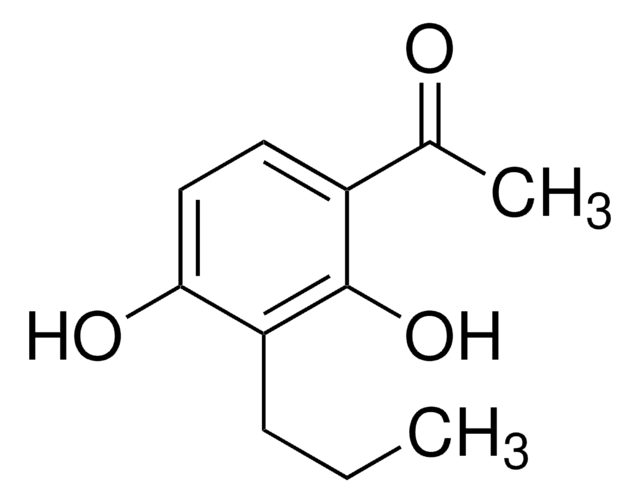481521
Hexaamminecobalt(III) chloride
99%
Sinónimos:
Cobalt hexammine trichloride, Hexaamminecobalt trichloride
About This Item
Productos recomendados
assay
99%
form
powder
mp
217 °C (lit.)
solubility
H2O: slightly soluble(lit.)
ethanol: insoluble(lit.)
density
1.71 g/mL at 25 °C (lit.)
SMILES string
N.N.N.N.N.N.[Cl-].[Cl-].[Cl-].[Co+3]
InChI
1S/3ClH.Co.6H3N/h3*1H;;6*1H3/q;;;+3;;;;;;/p-3
InChI key
JXBGZYGSWFSYFI-UHFFFAOYSA-K
¿Está buscando productos similares? Visita Guía de comparación de productos
General description
Application
- Rhenium (VII) compounds as inorganic precursors for the synthesis of organic reaction catalysts: Investigates the potential of Hexaamminecobalt(III) chloride as a replacement for commercial products in catalyzing organic reactions, highlighting its role in synthetic chemistry (K Leszczyńska-Sejda et al., 2019).
- In situ formation of a molecular cobalt (iii)/AgCl photocatalyst for visible-light water oxidation: Discusses the synthesis and application of Hexaamminecobalt(III) chloride in forming a novel photocatalyst for water oxidation, a critical process in solar energy utilization (H Mogi et al., 2021).
signalword
Danger
hcodes
Hazard Classifications
Aquatic Chronic 4 - Carc. 2 - Resp. Sens. 1 - Skin Sens. 1
Storage Class
11 - Combustible Solids
wgk_germany
WGK 3
flash_point_f
Not applicable
flash_point_c
Not applicable
ppe
dust mask type N95 (US), Eyeshields, Gloves
Certificados de análisis (COA)
Busque Certificados de análisis (COA) introduciendo el número de lote del producto. Los números de lote se encuentran en la etiqueta del producto después de las palabras «Lot» o «Batch»
¿Ya tiene este producto?
Encuentre la documentación para los productos que ha comprado recientemente en la Biblioteca de documentos.
Artículos
Plasmonic nanoparticles have unique optical properties that can be tailored to suit a variety of applications in the biotechnology1–8 and electronics9–16 industries.
Plasmonic nanoparticles have unique optical properties that can be tailored to suit a variety of applications in the biotechnology1–8 and electronics9–16 industries.
Plasmonic nanoparticles have unique optical properties that can be tailored to suit a variety of applications in the biotechnology1–8 and electronics9–16 industries.
Plasmonic nanoparticles have unique optical properties that can be tailored to suit a variety of applications in the biotechnology1–8 and electronics9–16 industries.
Nuestro equipo de científicos tiene experiencia en todas las áreas de investigación: Ciencias de la vida, Ciencia de los materiales, Síntesis química, Cromatografía, Analítica y muchas otras.
Póngase en contacto con el Servicio técnico









